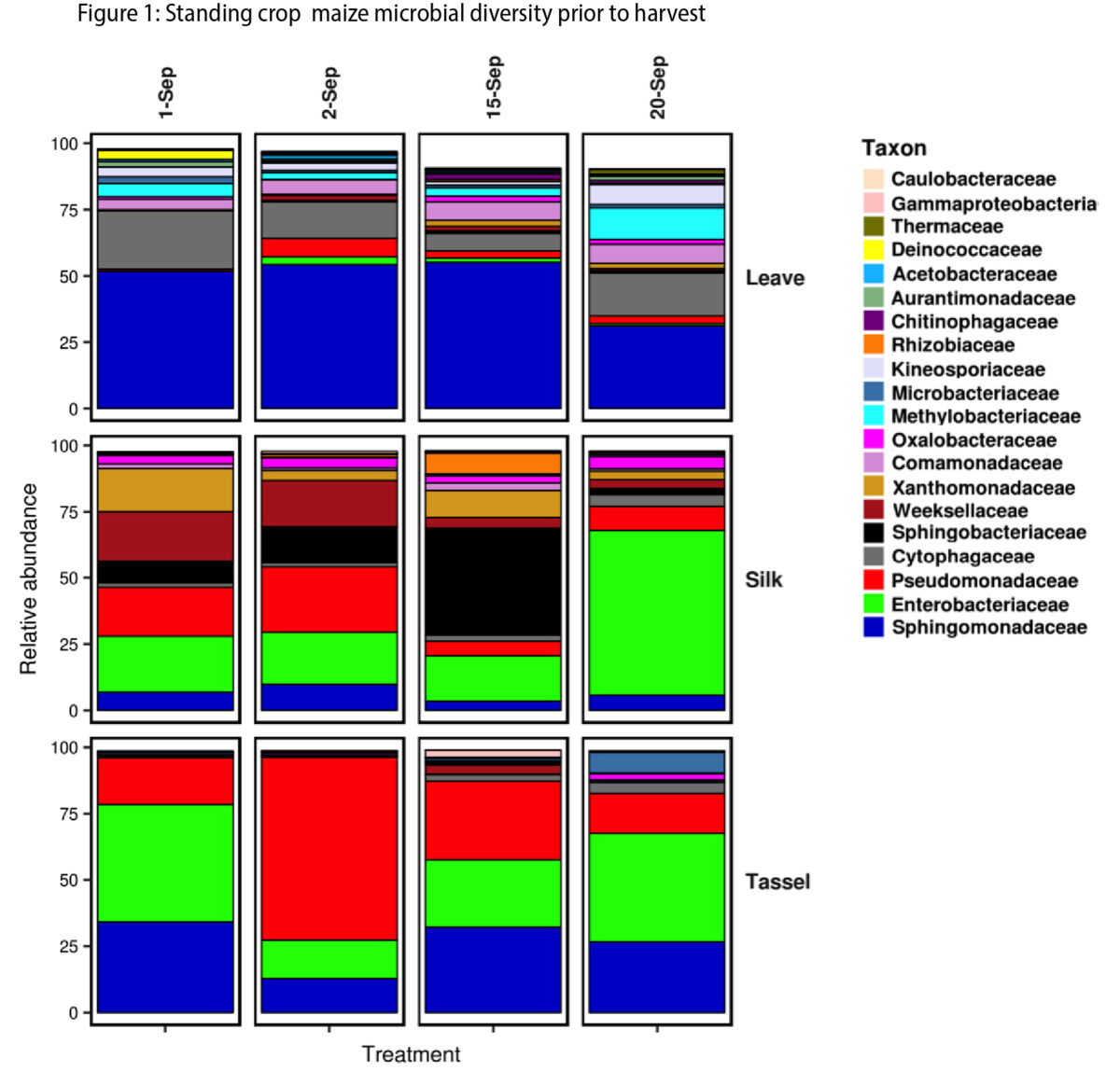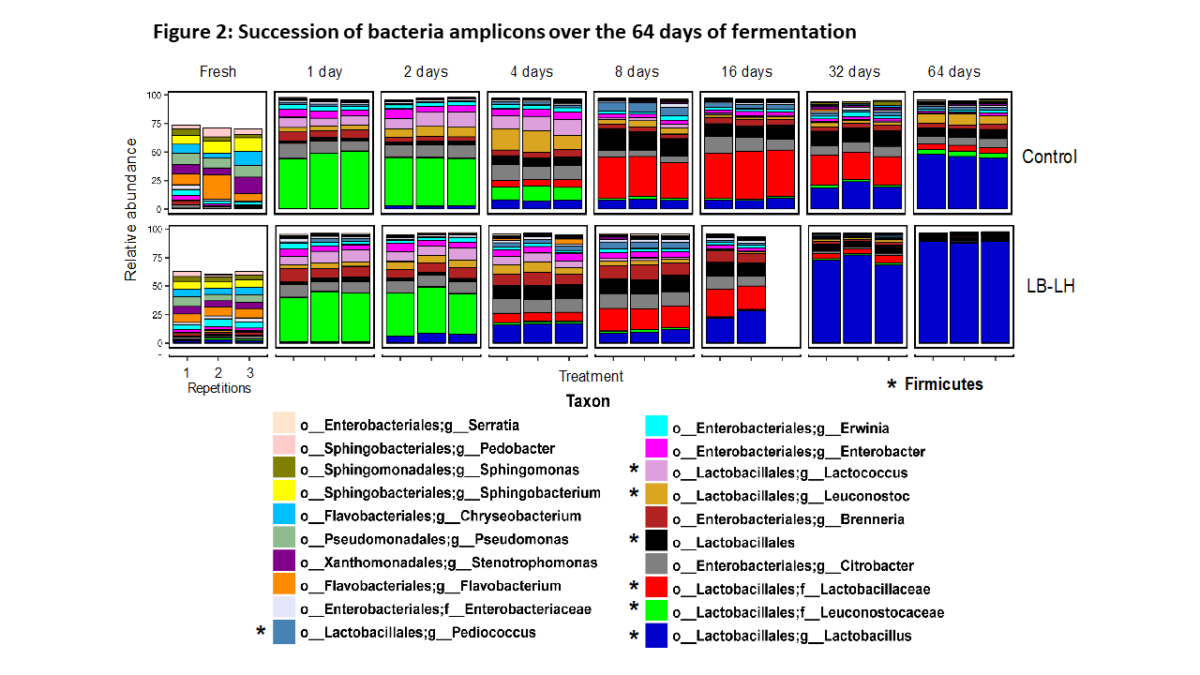Blog | Reading Time 3 minutes
Treating maize silage can help retain up to 20% more dry matter
Treat maize with a crop- and condition-specific inoculant to retain valuable dry matter (DM) this season.
Lientjie Colahan, technical sales support at Lallemand Animal Nutrition, says failure to treat maize could result in DM losses of 20% or more.
Many producers are unaware that poorly managed and untreated maize silage can result in significant losses of nutritional quality and physical DM,” adds Mrs Colahan.
It was long believed that maize would ferment well due to its high sugar content, however the advent of new DNA analytical methods has allowed us, for the first time, to study the abundance of all the different types of bacteria present on maize.”
She says the results show that in a short growing period, the microbial diversity of a standing crop of maize silage can change significantly week-to-week (Figure 1) – with many of the bacteria present being counterproductive to making good-quality silage.
Risk of non-beneficial bacteria spoiling maize silage

Essentially, there’s a risk of non-beneficial bacteria in the standing crop of maize dominating once it’s cut, resulting in an inefficient fermentation,” explains Mrs Colahan.
This will not only result in lost DM through the ensiling period, but also increased spoilage once the silage clamp is opened due to its poor stability.”
Mrs Colahan says poorly fermented maize silage can have a devastating impact on farm profitability with a 20% loss in DM akin to losing every sixth load of silage that comes through the farmgate.
Using a maize-specific inoculant promotes desirable bacteria
To prevent the problem, she recommends using a crop- and condition-specific inoculant, such as Magniva Platinum Maize.
Treating maize silage with a MAGNIVA Platinum inoculant will not only maintain the maize silage quality but will also reduce the dry matter (DM) losses through the fermentation and losses due to instability. It does so by actively inhibiting the growth of yeasts and moulds.
“This has been independently trialled and proven to overcome the microbial diversity seen in the standing crop of maize,” explains Mrs Colahan.
The abundance and types of bacteria found in maize silage change in silage treated with either MAGNIVA Platinum Maize or MAGNIVA Platinum Maize Elite compared to an untreated control over 64 days (Figure 2). The abundance of desirable Lactobacillus populations (blue bars) increased much more quickly than the control. At 64 days ensiling, the only type of bacteria to be found in the treated silage was Lactobacillus, which helps reduce the risk of heating or spoiling.

Five tips for making the best maize silage:
- Harvest crop when the plant reaches an average dry matter of 30-35%
- Use a crop- and condition-specific inoculant such as MAGNIVA Platinum Maize or Maize Elite
- Ensure it is clamped tightly
- Use a true oxygen barrier film under the top sheet, instead of highly porous black plastic, to help eliminate air pockets
- Keep an eye on the clamp and re-check any gravel bags, tyres or other weights, if the silage sheet has blown up during fermentation process
Published Aug 2, 2023 | Updated Sep 8, 2023
Related articles
Need specific information?
Talk to an expert